
© Chris Nash. (Click image for larger version)
Fall for Dance Festival 2016
Program 2
Richard Alston Dance Company: Rejoice in the Lamb
Aszure Barton & Artists: Awáa
Wendy Whelan and Edward Watson: The Ballad of Mack and Ginny
Grupo Corpo: Suite Branca
★★★✰✰
New York, City Center
29 September 2016
nycitycenter.org
Dance Salad
Where else but at Fall for Dance can one see dancers and companies as dissimilar as the Richard Alston Dance Company, Aszure Barton & Artists, Wendy Whelan and Edward Watson, and Grupo Corpo on one program? One of this recurring festival’s strongest selling selling points is the serendipity of its pairings. You pay $15 and get a grab-bag of dance in return. You’re bound to like something.
Program 1 was a real grab-bag. It started with a performance by STREB Extreme Action, directed by Elizabeth Streb, in which a squad of athlete-dancers flung itself from tall structures onto mats (with loud thuds) and swung from a giant revolving wheel. (Meanwhile, an MC encouraged the crowd to cheer and post pictures on social media.) Somehow the spectacle managed to be both terrifying and boring. Then, in the second segment, Dada Masilo’s The Dance Factory, from South Africa, deconstructed Stravinsky’s Rite of Spring, intriguingly, in a style that combined elements of African and western modern dance. Three dancers from ABT danced Frederick Ashton’s white, moonlit trio Monotones II, set to Satie’s Gnossiennes. It had an almost hypnotic effect on the audience. The trance was then broken by the fiery flamenco virtuoso Farruquito. His ability to cull syncopations and extra beats from the already highly complex rhythms of flamenco took everyone’s breath away.
The contrasts in the second program, which I caught on Sept. 28, were less extreme. Practically all the dancing could be described as modern or contemporary. The choreographers and companies came from England (the Richard Alston Dance Company and Edward Watson), Canada (Aszure Barton & Artists), Brazil (Grupo Corpo), and New York (Wendy Whelan). Two of the works, Alston’s Rejoice in the Lamb and the Whelan/Watson duet The Ballad of Mack and Ginny used live music. The other two were accompanied by electronic ambient music, pleasant without being particularly memorable.

© Pari Naderi. (Click image for larger version)
It was a pleasure to see Richard Alston’s Rejoice in the Lamb again after a performance two years ago at Montclair State. The piece, which is set to Benjamin Britten’s eponymous cantata, is a meditation on faith, prayer, and community, led by a preacher-like figure, Nicholas Bodych. (The story recounted by the text of Rejoice in the Lamb is more complicated, but these are the ideas that come through in the dance.) Fleeting images of hands held in prayer, the sign of the cross, and laying of hands blossom throughout the choreography. A figure representing conflict or temptation returns again and again. The trick that Alston pulls off here is to suggest this prayerful state without coming across as heavy-handed. In its plainness and honesty, Rejoice brings to mind Sweet Fields, Twyla Tharp’s meditation on the rituals of the Shakers. Alston’s language is like a cross between Mark Morris, Paul Taylor, and Tharp: bare-footed, juicily danced, rhythmic, and un-fussy. Legs are swung high and jumps soar, but nothing feels arbitrary or forced. The eight dancers, dressed in simple, peasant-like garb, are strikingly similar in build: not too tall, not too short, strong but not ostentatiously so. Like the chorus (Montclair State University Vocal Accord), they represent a vision of “everyman.” Rejoice in the Lamb, which opened the program, was the high point of the evening.
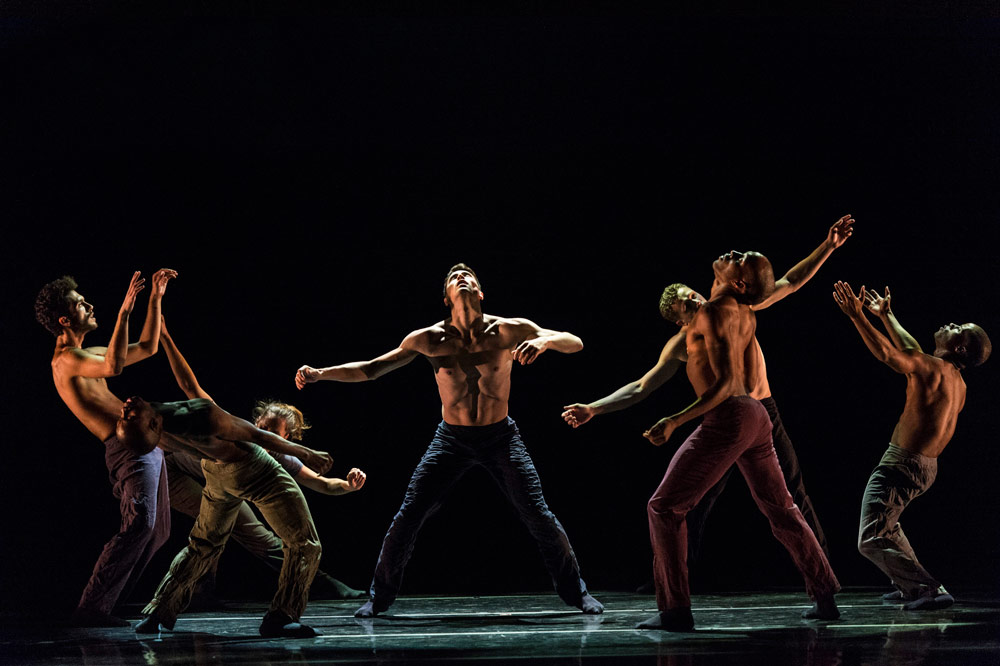
© Don Lee (Click image for larger version)
Aszure Barton’s Awáa and Grupo Corpo’s Suite Branca were both ensemble works set to atmospheric music with a pronounced acrobatic element. Awáa had the stronger conceptual framework; it suggests the forces of nature, the elements, the changing of the seasons, masculine and feminine energies. Barton uses dark scrims to alter the mood between sections, and also as screens for projections (mostly of figures floating underwater). The dancers sway slightly, like plankton in the current. In an acrobatic pas de deux, a man and woman roll, crawl, and tangle limbs, before floating away, as if carried away by different tides. The somewhat incongruous highlight is a rhythmic dance for three men, full of flickering fingers and undulating arms, strongly influenced by vogueing. As in vogueing, the men seem to slip easily between masculine and feminine identities. It’s a seductive dance and you wish it went on forever.
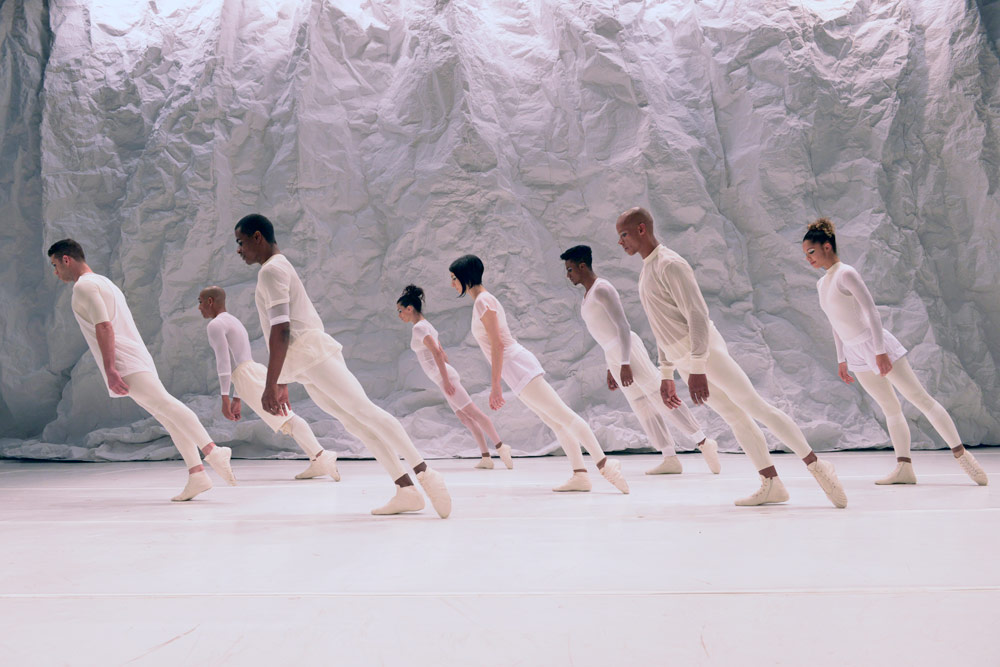
© Jose Luiz Pederneiras (Click image for larger version)
Grupo Corpo’s Suite Branca – branco means white in Portuguese – is a big ensemble suite that shows off the company’s athletic and appealing dancers. They couldn’t be more diverse: big, small, and everything in between, and racially diverse as well. The design scheme, though, is completely uniform: white costumes, sneakers, and crinkled-paper backdrop. (It reminded me of the clean, elysian feel of some of Lucinda Childs’ dances.) The mostly insipid music, by Brazilian rocker Samuel Rosa, is the piece’s weakest point. Paulo Pederneiras’s choreography is best in the large ensembles, where he crosshatches patterns and rhythms, keeping every inch of the stage alive. Rhythms ripple across the dancers’ bodies as they travel in and out of view, often moving backward. The partnering is acrobatic and full of lifts – there’s a whole section in which a petite female dancer is passed from one man to the next, with her feet never touching the ground. A man flings a woman halfway across the stage, where she lands safely and rolls offstage. And yet, somehow, the piece never really picks up steam. It feels virtuosic but oddly joyless.
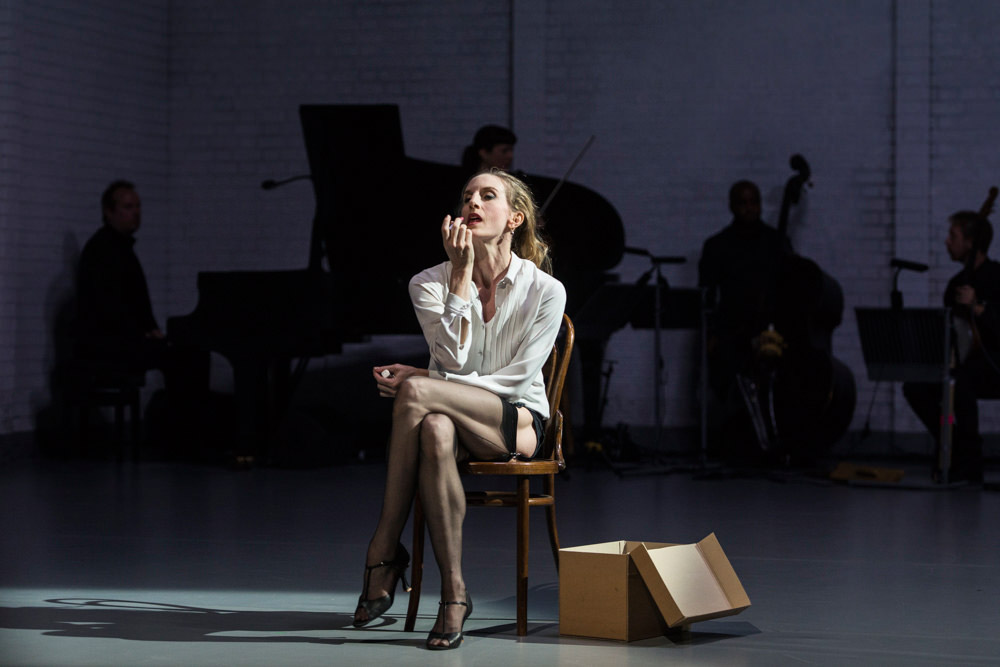
© Foteini Christofilopoulou. (Click image for larger version)
For the New York audience, the biggest novelty was the return of the former New York City Ballet star Wendy Whelan, dancing here with Edward Watson in a duet called The Ballad of Mack and Ginny, by the British choreographer Arthur Pita. The duet is an outtake from an evening the two created together, Whelan/Watson: Other Stories, which premiered last year in London. It offers a hitherto unseen side of Whelan, who built her career dancing works by Balanchine, Christopher Wheeldon, and Alexei Ratmansky. Here, she’s a tough gal in high heels, thigh-high stockings, and garters; her makeup is pure Greta Garbo, with heavy lids and a downturned mouth. I had forgotten how long her legs are, or maybe the getup makes them look even longer; in any case, as they say, she has legs for miles.
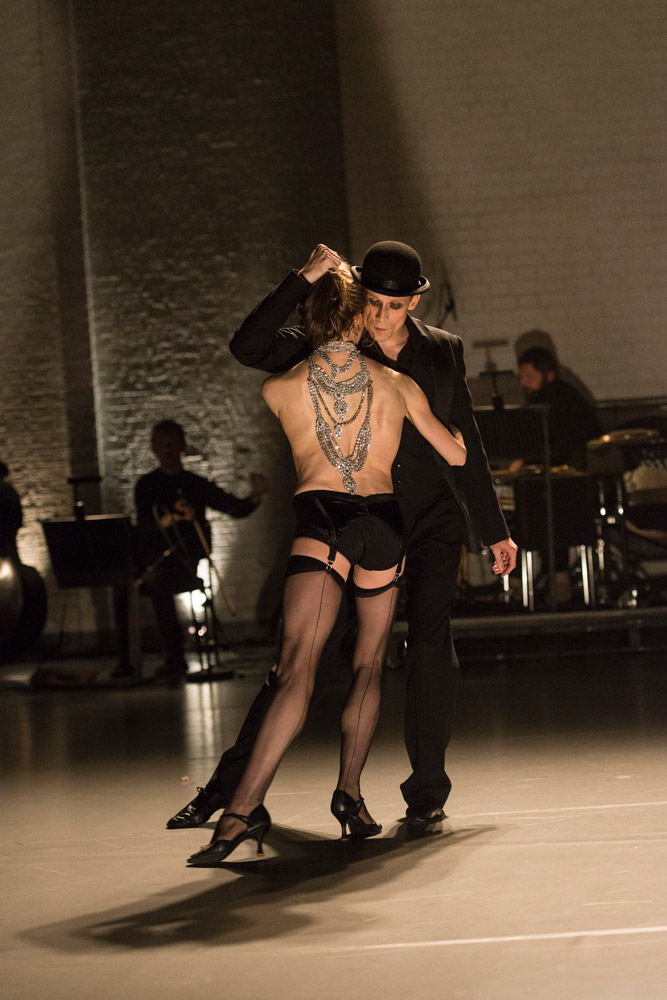
© Foteini Christofilopoulou. (Click image for larger version)
The music is a tango from Kurt Weill’s Threepenny Opera, arranged by Frank Moon, and played onstage by a live band. Whelan and Watson curl around each other, indulging in the usual tango ornaments – kicks, hooks, tiny filigreed footwork, straddling poses – plus some nifty upside down lifts. He takes off her shirt and she stands, erotically exposed and alone, with her back to the audience, then slinks off, sideways, into the wings. As you might expect, love and lust lead to a knife in the gut. The whole thing has a faintly Pina Bauschian air: I know that you know that I know that what is going on here isn’t real. Even the smoking looks fake. Everyone’s in on the joke. It doesn’t quite work – and the tango footwork isn’t crisp or rhythmic enough to stand on its own merits – but somehow it doesn’t matter. But it’s good enough just to see these two slinky, long-limbed kindred spirits tap into their kinky sides. They seem to be enjoying themselves immensely. Why not, it’s Fall for Dance.













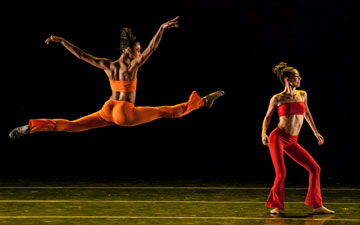

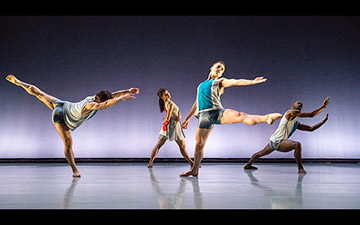

You must be logged in to post a comment.